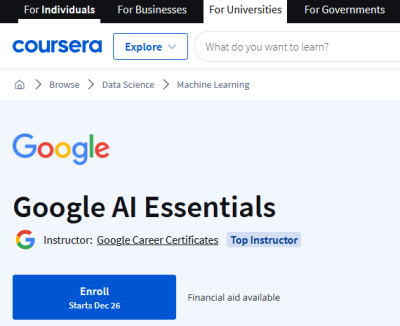 When I was teaching in a high school, I used to tell students (and faculty) that we were not preparing them for jobs. I was sure many of our students would end up in jobs with titles that did not exist then. There is a song by The Byrds from the 1960s titled "So You Wanna Be a Rock 'n' Roll Star." In 2024, it could be "So You Want To Be An AI Prompt Engineer."
When I was teaching in a high school, I used to tell students (and faculty) that we were not preparing them for jobs. I was sure many of our students would end up in jobs with titles that did not exist then. There is a song by The Byrds from the 1960s titled "So You Wanna Be a Rock 'n' Roll Star." In 2024, it could be "So You Want To Be An AI Prompt Engineer."
The role of AI prompt engineer attracted attention for its high-six-figure salaries when it emerged in early 2023. What does this job entail? The principal aim is to help a company integrate AI into its operations. Some people describe the job as more prompter than engineer.
There are already tools that work with apps like OpenAI’s ChatGPT platform that can automate the writing process using sets of built-in prompts. Does that mean that AI will replace AI prompt engineers already? For now, the prompter works to ensure that users get the desired results. They might also be the instructors for other employees on how to use generative AI tools. They become the AI support team. AI can automate "trivial" tasks and make more time for work that requires creative thinking.
What kind of training leads to getting this job? You might think a background in computer science, but probably a strong language and writing ability is more important. People who write in the corporate world might justifiably fear AI will take their jobs away. Being a prompter might be an alternative.
Still, I suspect that there is a good possibility that a prompter/engineer's job might be vulnerable as software becomes better at understanding users’ prompts.
If you are interested in being an AI prompt engineer, I posted last week about some free online courses offered by universities and tech companies that included three courses that relate to creating prompts for AI.
AI Applications and Prompt Engineering is an edX introductory course on prompt engineering that starts with the basics and ends with creating your applications.
Prompt Engineering for ChatGPT is a specific 6-module course from Vanderbilt University (through Coursera) that offers beginners a starting point for writing better prompts.
Another course on ChatGPT Prompt Engineering for Developers is offered by OpenAI in collab with DeepLearning and it is taught by Isa Fulford and Andrew Ng. It covers best practices and includes hands-on practice.

 Coursera’s CEO,
Coursera’s CEO,  When I was teaching in a high school, I used to tell students (and faculty) that we were not preparing them for jobs. I was sure many of our students would end up in jobs with titles that did not exist then. There is a song by The Byrds from the 1960s titled "So You Wanna Be a Rock 'n' Roll Star." In 2024, it could be "So You Want To Be An AI Prompt Engineer."
When I was teaching in a high school, I used to tell students (and faculty) that we were not preparing them for jobs. I was sure many of our students would end up in jobs with titles that did not exist then. There is a song by The Byrds from the 1960s titled "So You Wanna Be a Rock 'n' Roll Star." In 2024, it could be "So You Want To Be An AI Prompt Engineer."